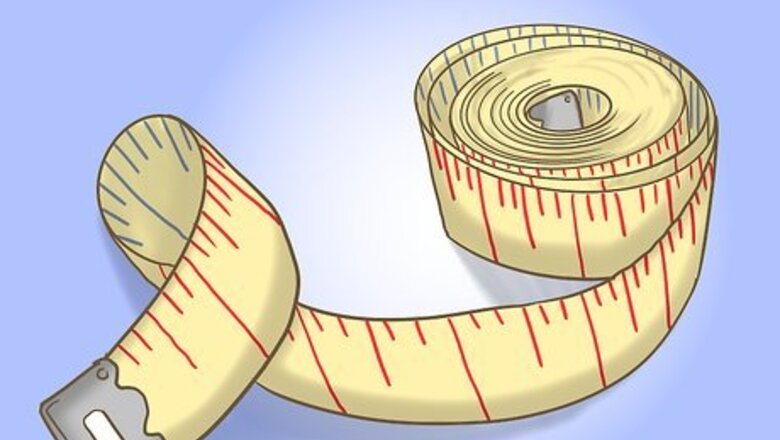
views
Measuring Your Face
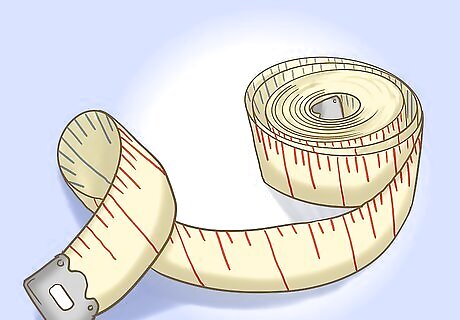
Grab a flexible measuring tape. To measure your face, you will need the kind of soft fabric tape measure that tailors use. These are easy to come by at most department stores. It doesn’t matter whether the ruler is in inches or centimeters. The important part is how the measurements compare to each other, not the exact numbers.

Get your hair out of the way. If your hair is long, put it up or tie it back. Slick back or clip up shorter styles. Tip: Don’t try to measure your face with a stiff retractable measuring tape. Not only will this be a lot more difficult, but you could hurt yourself if you accidentally retract the tape during a measurement.
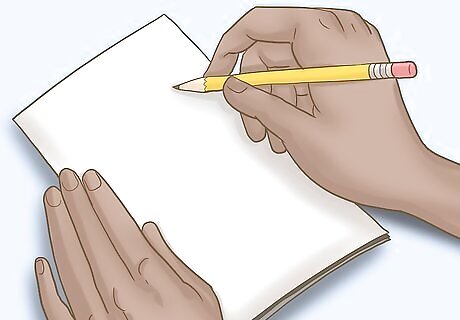
Get a pencil and paper. In order to determine your face shape with measurements, you will need to write down each measurement as you go so that you can compare them all when you are done. Get something to jot down your measurements with.
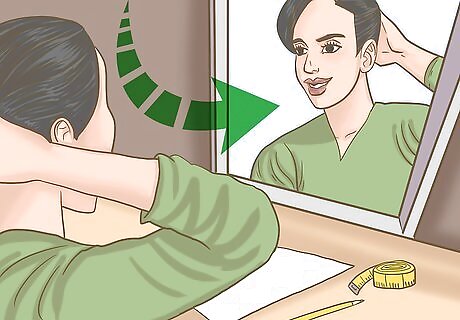
Position yourself in front of a mirror. It’s easiest to measure your face if you can see what you’re doing. Stand or sit in front of a large mirror in a well-lit room. Face the mirror front on, with your chin level.
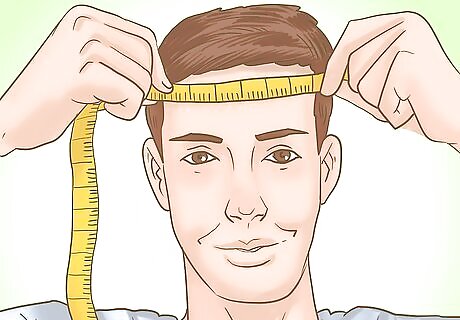
Measure across the widest part of your forehead. This is typically located midway between your eyebrows and your upper hairline. Measure the distance straight across from the hairline on 1 side of your forehead to the other. Write down the result. Expert Answer Q A wikiHow user asked: "When measuring the width of my face, should I measure all the way to the hairline?" Laura Martin Laura Martin Licensed Cosmetologist Laura Martin is a Licensed Cosmetologist in Georgia. She has been a hair stylist since 2007 and a cosmetology teacher since 2013. Laura Martin EXPERT ADVICE Answer from Laura Martin: Laura Martin, licensed cosmetologist, answers: "Yes - if you're measuring the width of your forehead, start at the hairline on one side and stop at the hairline on the other side. This should help you get the most accurate measurement."
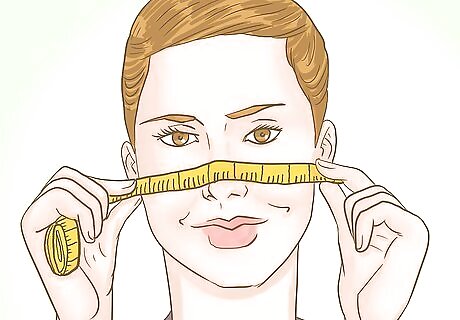
Take a measurement across your cheekbones. This measurement can be a little tricky. Feel for the most prominent part of your cheekbones with your fingertips. This is usually located just below the outer corner of each eye. Once you’ve located the right spot, measure straight across from 1 cheekbone to the other. Tip: Keep in mind that the bridge of your nose can push out the tape measure and make this width appear greater than it really is. To get a more accurate measurement, hold the tape measure straight across in front of your face and eyeball where it lines up with each cheekbone. If you do this, be sure to hold the measuring tape away from your face for your other measurements as well.

Measure from each end of your jaw to the tip of your chin. Place one end of the tape measure at the corner of your jaw below your ear, and bring the other end to the tip of your chin. Do the same on the other side and add the results together, or just multiply the first measurement by 2. This will give you your total jawline length.

Measure the length of your face. Take your tape and measure from the center point of your upper hairline down to the tip of your chin. If you have a receding hairline or a shaved head, estimate where your hairline would be. Note: If you have a prominent nose, this can throw off your length measurement. Instead of closely following the contours of your face, hold the measuring tape straight up and down in front of your face and eyeball where it lines up with your hairline and chin.
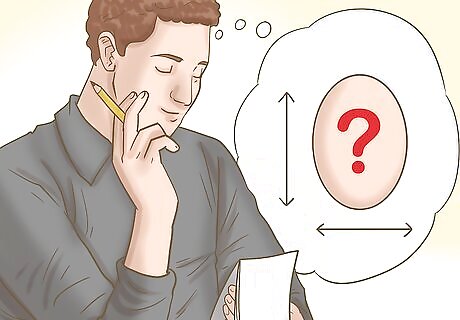
Compare each measurement to determine your face shape. After you’ve made all the measurements and written them down, determine which measurements are greatest and which are smallest. Compare the proportions of your face with those typical of the common face shapes. For example, if your face is about as long as it is wide, it is probably round or square. A square face has a wider, more angular jaw than a round face. If your face is longer than it is wide, it may be oblong, oval, or rectangular. To determine which, look at how your forehead, cheekbones, and jawline measure up. If your measurements get gradually narrower from forehead to jawline, your face is heart-shaped or oval. If they’re similar all the way down, your face may be oblong, square, or rectangular. If your face gets wider from forehead to jawline, it’s triangular.
Flattering Your Face Shape
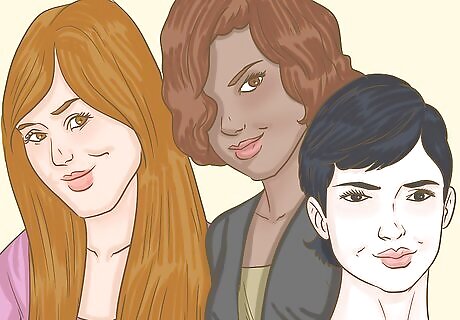
Choose a flattering hair length for your face shape. The length of your hair can affect how long and wide your face looks. Go with a length that balances out the dimensions of your face. Long, straight hair is an excellent choice for round and square faces, because it adds length and minimizes width. Extremely short cuts with more volume on top, such as a pixie cut, can also lengthen short faces and draw attention to the eyes and cheekbones. Medium to short cuts, such as a chin-length or shoulder-length bob, can make long faces look shorter and add fullness to the face. This is a good choice for oval or oblong faces.
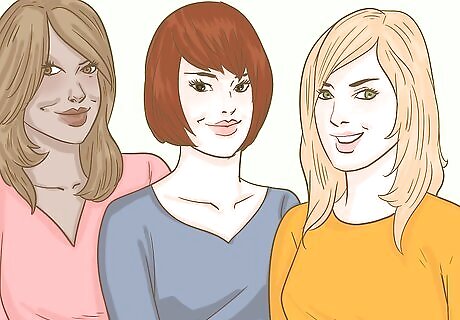
Style your bangs to fit your face. The shape of your face is an important factor in determining what kind of bangs look best on you (or whether you should have them at all). Consider the following when deciding on bangs: Long, feathery bangs that frame the forehead in an A-shape can help soften the look of a square face. Side-swept bangs are flattering on a variety of face shapes, including round, heart-shaped, and oval or oblong. Blunt, long, straight-across bangs can make narrow foreheads appear wider and minimize the length of longer faces.
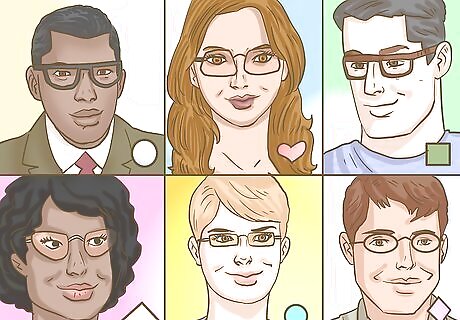
Pick frames that balance out your face shape if you wear glasses. Glasses can change the appearance of your face quite a bit. If you wear glasses, select frames that complement the shape of your face rather than exaggerating it. For example: Maintain the balance of an oval face with frames that match the width of your face. If you have a heart-shaped face, minimize the breadth of the upper half of your face with light-colored or rimless frames. You can also choose frames that are wider at the bottom. For long faces, such as oblong or rectangular, choose wide frames with low bridges and decorative temple elements that add width. For faces that are narrower on top, such as triangular faces, pick frames that are wider on top, such as cat-eyes. Choose narrow frames for short, wide face shapes, such as square or oval. Curved frames balance out more angular faces, while angular frames work best with round faces. Soften the look of an angular diamond face shape by choosing oval frames.

Flatter your face shape with complementary makeup. If you wear makeup, apply it in ways that balance the proportions of your face and bring out your best features. For example: Add width to an oblong face by putting blush on the apples of the cheeks and blending out toward the temples. Reduce length by adding bronzer to the hairline and jawline. Use bronzer to minimize the width of the forehead on a heart-shaped face. Give structure to a round face by applying bronzer around the entire outer perimeter of the face and under the cheekbones. Highlight the central part of the face (middle of the forehead, bridge of the nose, high point of the cheeks, and chin). Soften square faces by contouring the forehead, temples, and jawline, and adding highlighter to the cheeks. For face shapes with narrower foreheads, such as diamonds and triangles, widening the space between your brows a little can give the illusion of greater width at the top of the face.
Recognizing the Basic Face Shapes
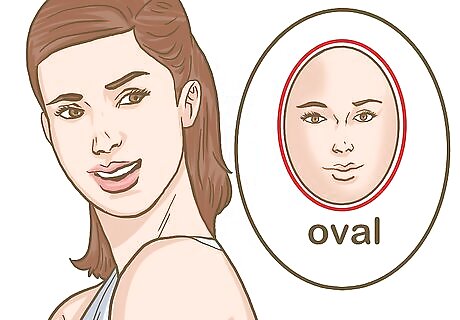
Recognize oval faces by their slight tapering. Divide your face into 2 halves, then check and determine the shape of top half of your face. If your face is oblong but tapers slightly from forehead to jaw, you may have an oval-shaped face. Oval faces tend to be about 1 ½ times longer than they are wide.
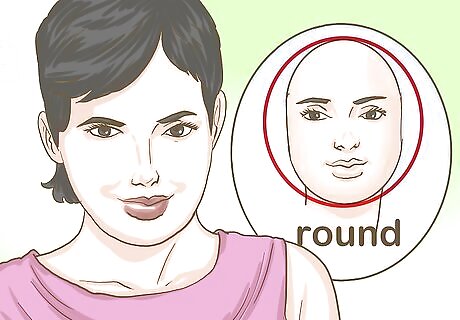
Look for width across the cheekbones to identify a round face. You can identify the shape of the face by examining the lower half of your face. Round faces are widest across the cheekbones, with rounded foreheads and jawlines. Another good rule of thumb is that the round face is typically about as long (measuring from hairline to chin) as it is wide (from cheekbone to cheekbone).
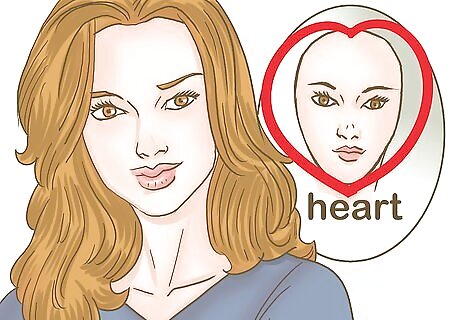
Check for a wide forehead and narrow jaw to spot a heart-shaped face. Heart-shaped faces are widest across the forehead, and gradually narrow as you move down to the chin. The forehead should be wider than the cheekbones, and the jaw narrower than the cheekbones and the forehead.}Note: This face shape is often associated with a pointy chin.
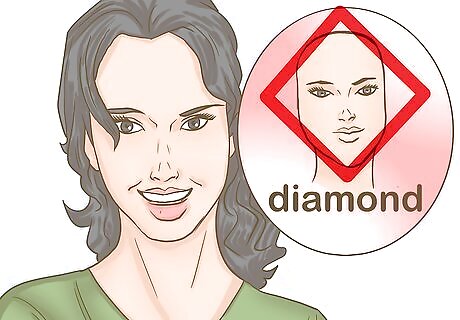
Note a narrow forehead and jawline to identify a diamond-shaped face. If your face is long, widest at the cheekbones, and narrow towards the forehead and chin, you have a diamond-shaped face.
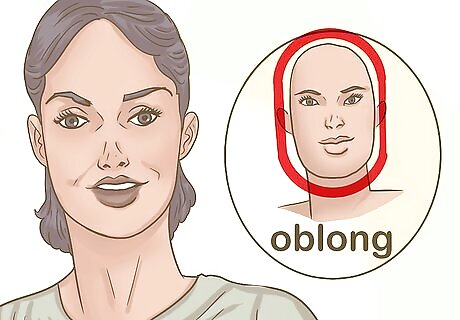
Spot an oblong face by looking for a rounded jawline and forehead. Oblong faces are long, but also rounded at the top and bottom. They tend to be about equally wide across the cheekbones and jawline.
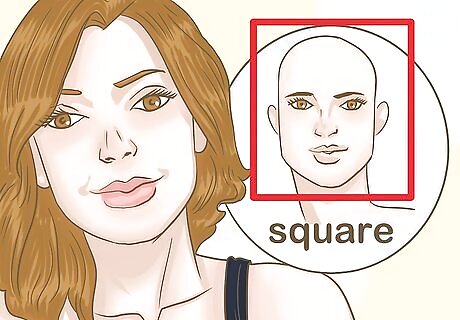
Identify a square face by looking for a wide jawline and forehead. Square faces tend to have a jaw that is about as wide as, or even wider than, the cheekbones. Square faces typically have a wide forehead as well. The slope from the corners of the jaw to the chin is gentle, and the chin is usually fairly wide, rather than pointy or rounded.
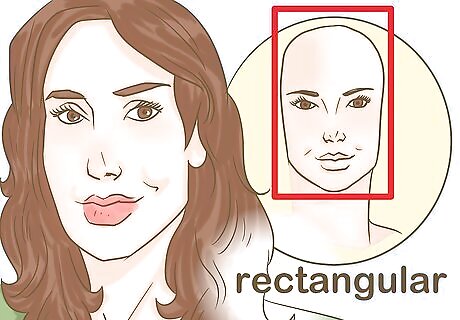
Observe whether the square jawline comes with a long face. Like round faces, square faces are usually about as wide as they are long. If you have a square jaw with a longer face, your face shape is rectangular rather than square.
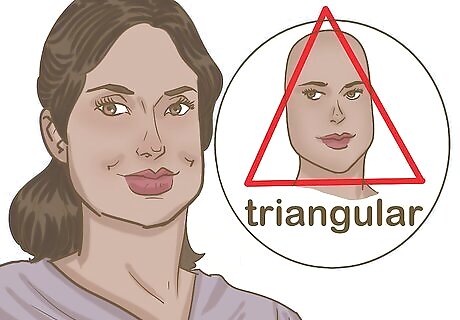
Establish that your face is triangular by looking for wider jawline. A square jawline can also be a feature of a triangular face. If your forehead and cheekbones are significantly narrower than your jawline, your face is triangular.

















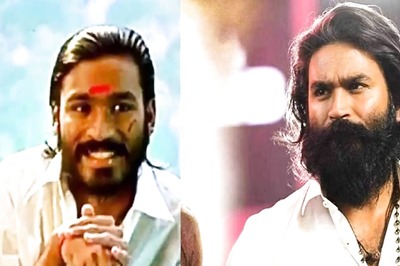


Comments
0 comment